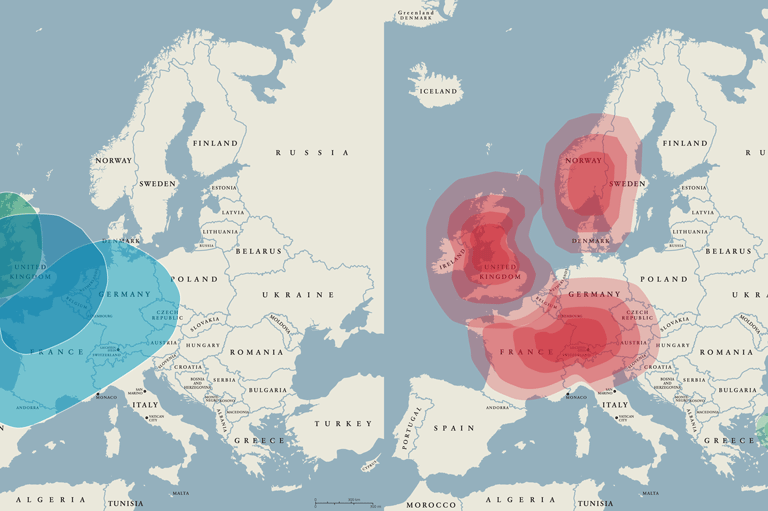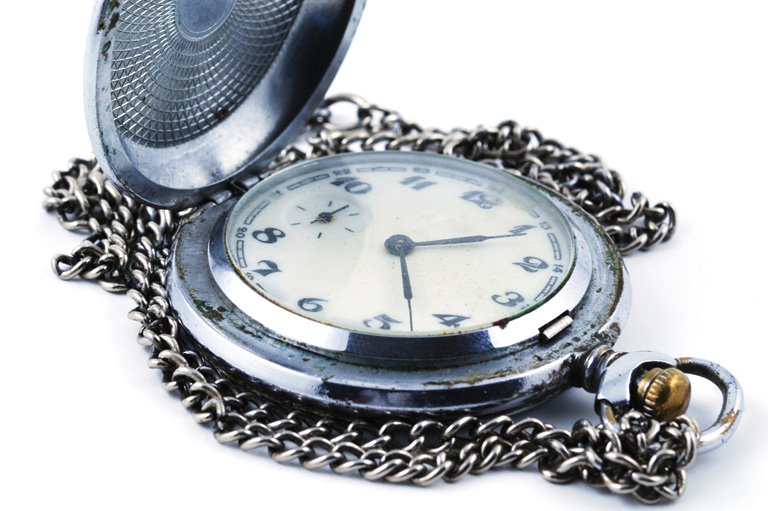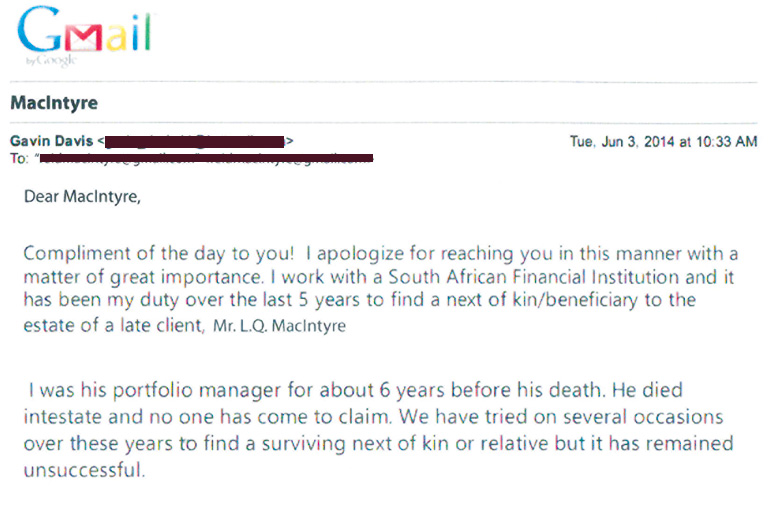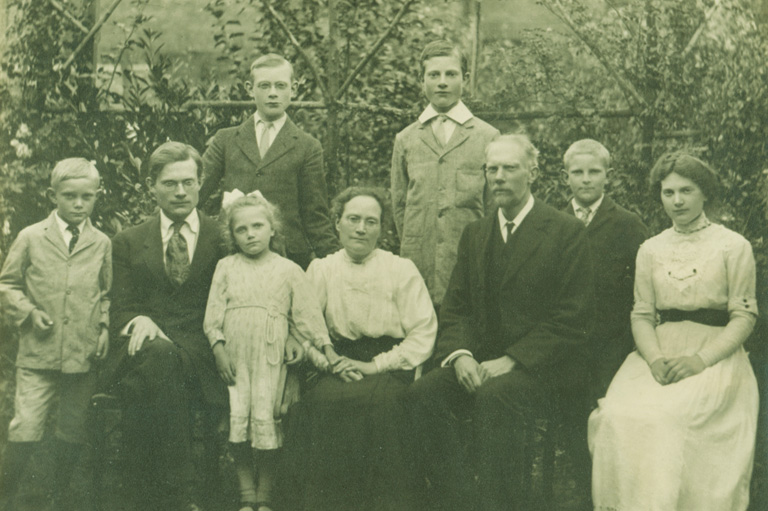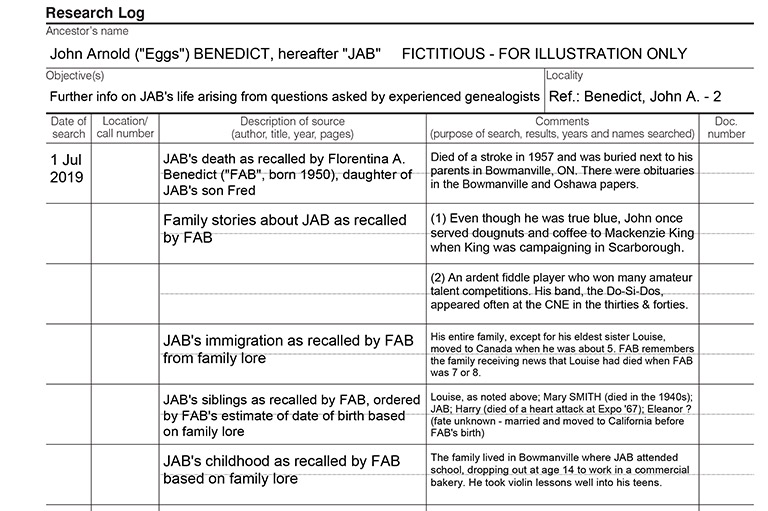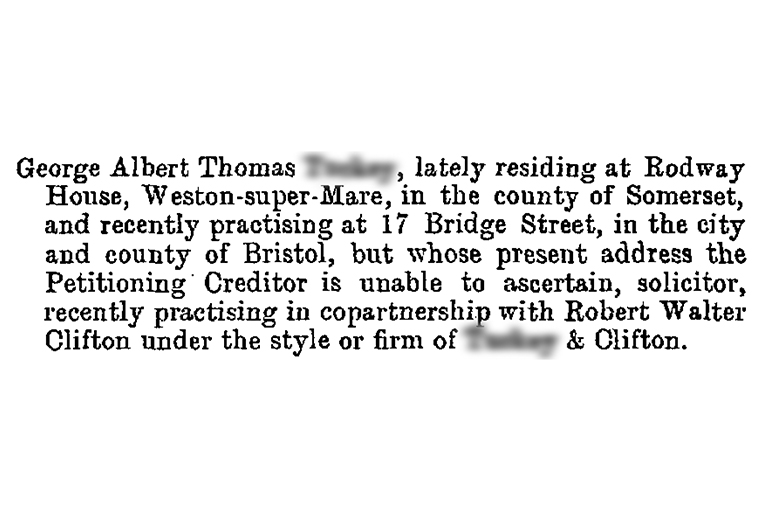Roots: Seeing Double
My genealogical chum Heather recently unearthed this oddball case as she searched for the origins of her grandfather, Malcolm Hilborn.
His earliest certain appearance in documentary records is the Canadian census of April 1891, when he was enumerated at age five as the eldest child of Joseph and Sarah Hilborn of Yarmouth Township, Elgin County, Ontario, the site of all events related below.
It is important for what follows to know that, as an adult, Malcolm Hilborn seemed to accept — without second-guessing — that his birthdate was August 26, 1885.
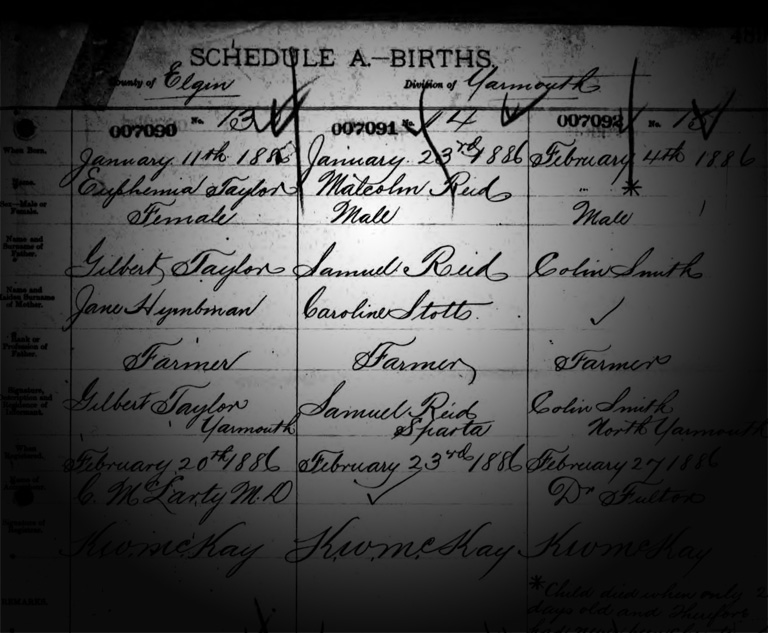
Things start to get murky when we investigate Malcolm’s family more closely:
- Joseph and Sarah’s marriage: They didn’t tie the knot until May 17, 1887, well after any likely date of young Malcolm’s birth. We also learn that Sarah was the daughter of Samuel and Caroline Reid.
- Malcolm Hilborn’s birth registration: There isn’t one. The only remotely similar candidate is Malcolm Reid, but he was reportedly born on January 23, 1886, to the aforementioned Samuel Reid and Caroline Stotts (Caroline Reid’s maiden name). Could Malcolm Reid and Malcolm Hilborn be the same person?
- Records mentioning Caroline Reid: From various sources we project that Caroline would have been an improbable fifty-three at the time of Malcolm Reid’s birth. Worse, we find her death recorded on April 16, 1885, a full nine months and one week before the birth of her supposed son. A clerical error? Unlikely. Her gravestone displays the same date of death.
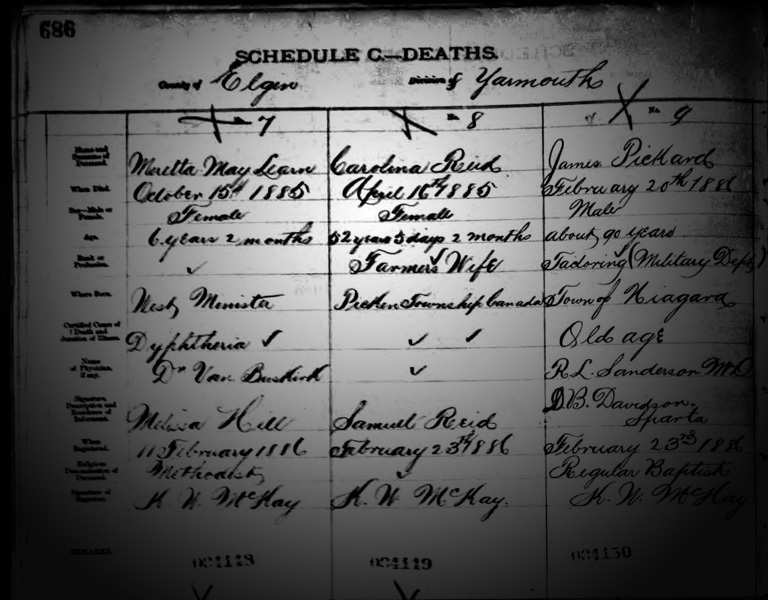
If Caroline’s death record is accurate, then Malcolm Reid’s birth record must contain misinformation. Yet Samuel Reid reported both events to the same registrar on the same day, February 23, 1886. Had the registrar known that Caroline Reid and Caroline Stotts were the same person, he would surely have objected. But the Reids were newcomers to Elgin County, and Stotts was a surname no doubt unfamiliar to him.
The key question for Heather is, one Malcolm or two? We have no smoking gun. Yet, what are the odds that there were two Malcolms in the same extended family? One of them was never officially born; the other was only documented at birth, with everything that came after a mystery. Like Clark Kent and Superman, the two Malcolms were never in the same room at the same time.
So through a process of analysis and correlation of such evidence as exists, we incline to the theory that Malcolm Reid was born of a mother other than Caroline Reid, and later became Malcolm Hilborn. Here is one hypothetical timeline that fits this conjecture and, perhaps more importantly, tallies with what we imagine to have been the emotional state of Samuel Reid. Problem is, I can’t prove it.
April 16, 1885: Caroline Reid dies. Her husband Samuel discovers around this time that his unmarried daughter Sarah is pregnant. He concocts a plan to preserve his daughter’s honour by claiming the child as his own.
August 26, 1885: Malcolm Reid/Hilborn is born to Sarah Reid on the date that will be observed as his birthday throughout his life. But Samuel cannot bring himself to report the birth at this time. He is willing to shift the burden of shame for an illegitimate child from his daughter to himself, but he’s not prepared to cast himself as a man who was unfaithful to his wife during her lifetime.
January 23, 1886: A full nine months and a bit have passed since Caroline Reid’s passing, and this is the fictional date Samuel decides to assign to the birth of Malcolm.
February 23, 1886: Samuel reports to the registrar both the death of his wife Caroline Reid and the birth of his son with a woman named Caroline Stotts. He relies upon the registrar’s ignorance of his wife’s maiden name.
February 4, 1887: Samuel Reid dies. His will mentions all of his children, except Malcolm. Hmm.
May 17, 1887: Sarah Reid and Joseph Hilborn marry. They raise Malcolm as their own, which he may well have been. As the circumstances of his birth recede into the past, they see no reason not to observe his birthday on the correct date.
Are there other scenarios that fit the facts? Certainly, but none that seems more plausible. Do you have a better hypothesis?
Thanks to Heather for exposing me to an engrossing case history that illustrates both the power and the limits of genealogical research.
Themes associated with this article
Advertisement
You might also like...

Canada’s History Archive, featuring The Beaver, is now available for your browsing and searching pleasure!

